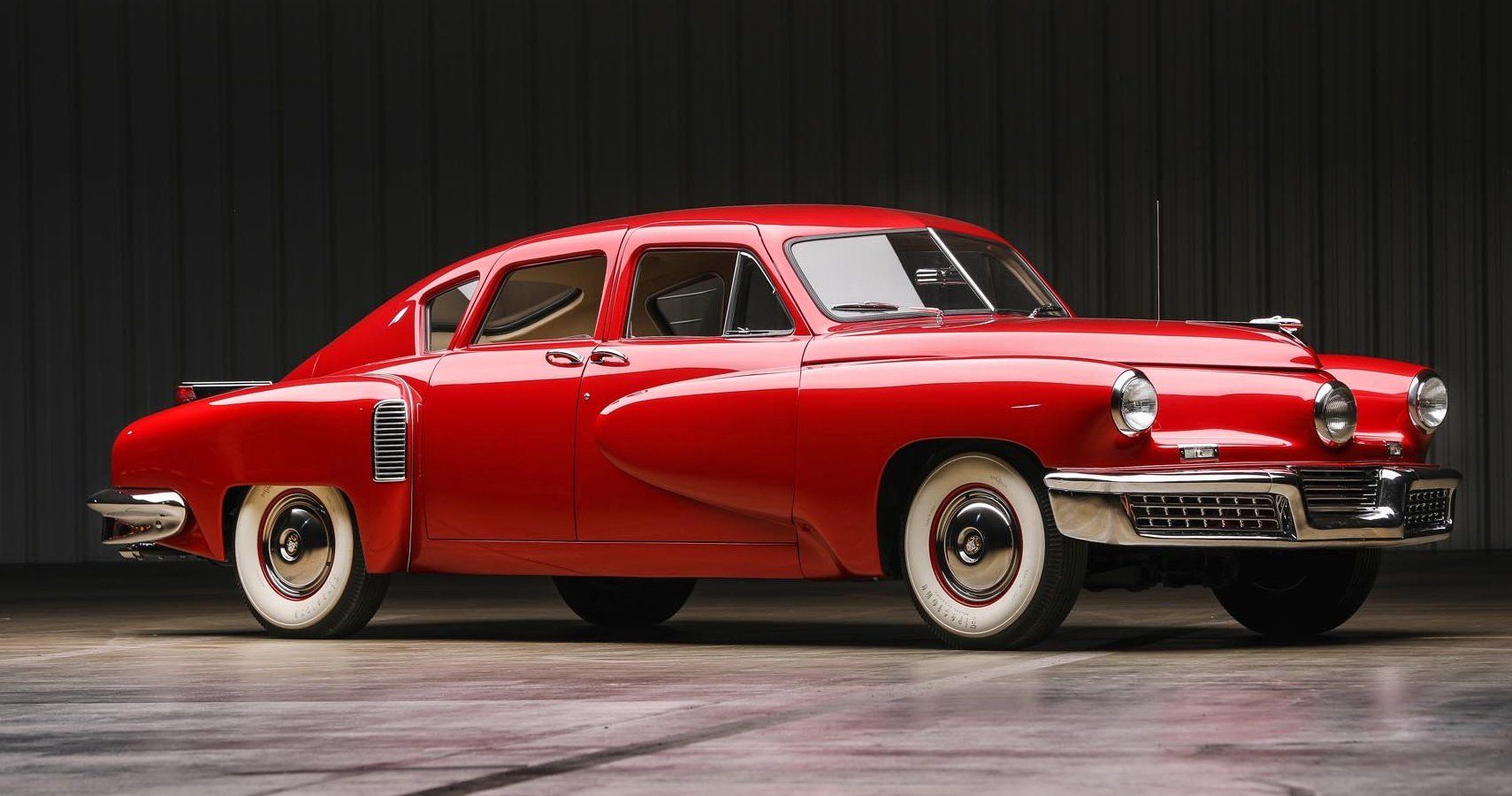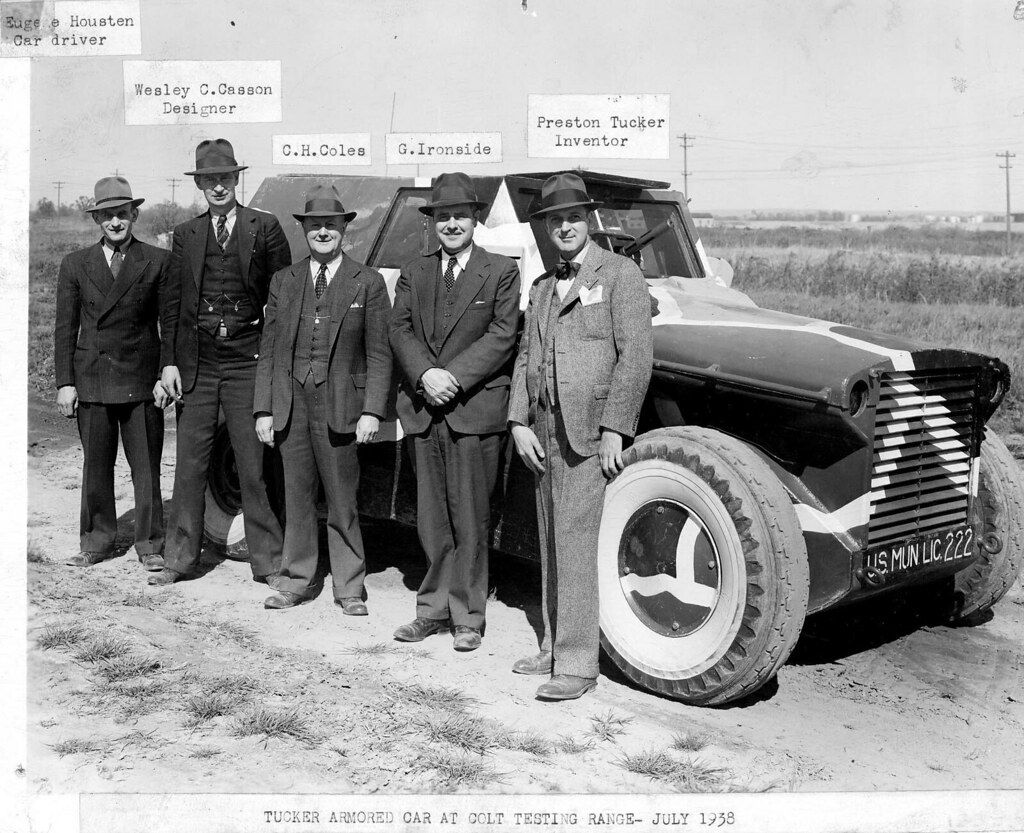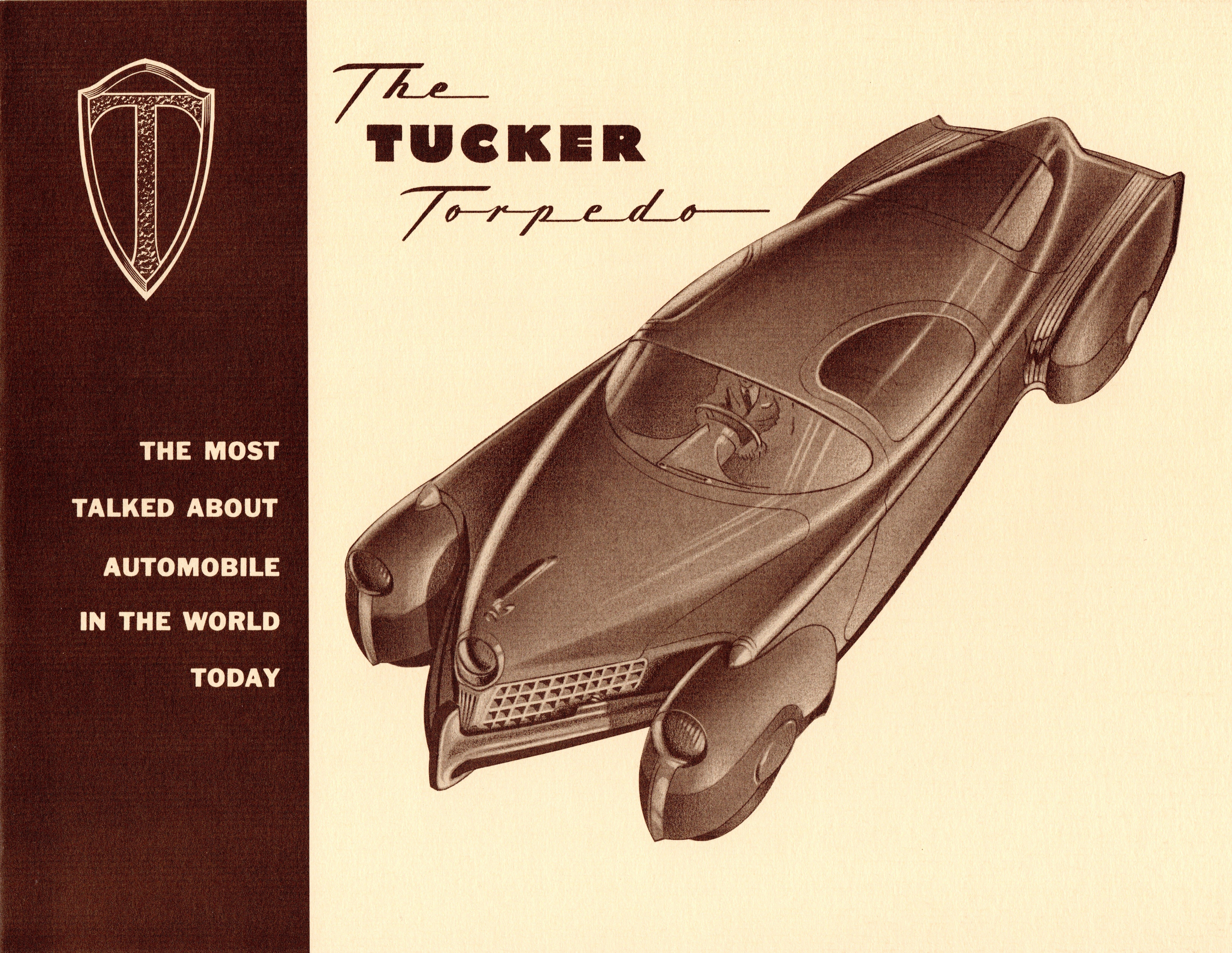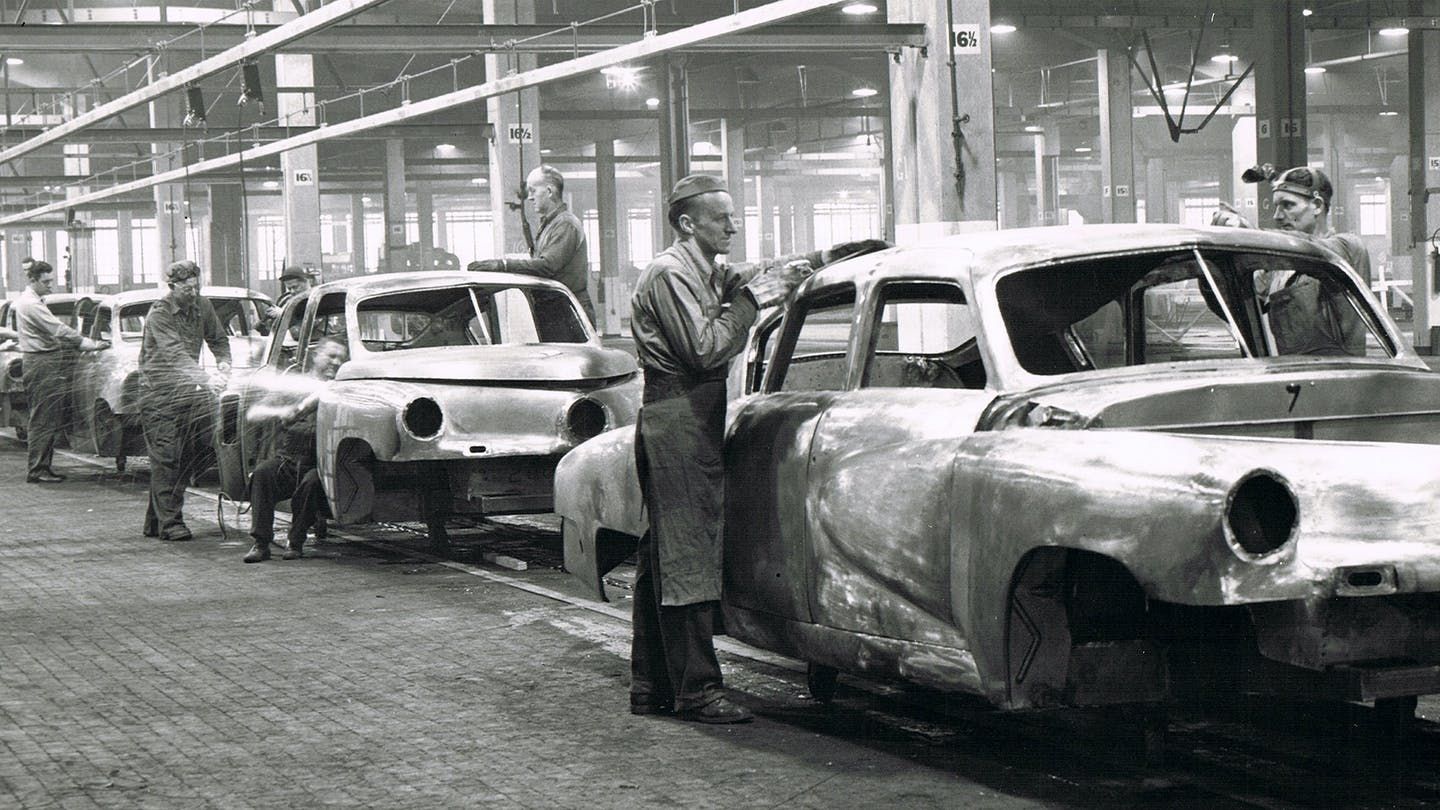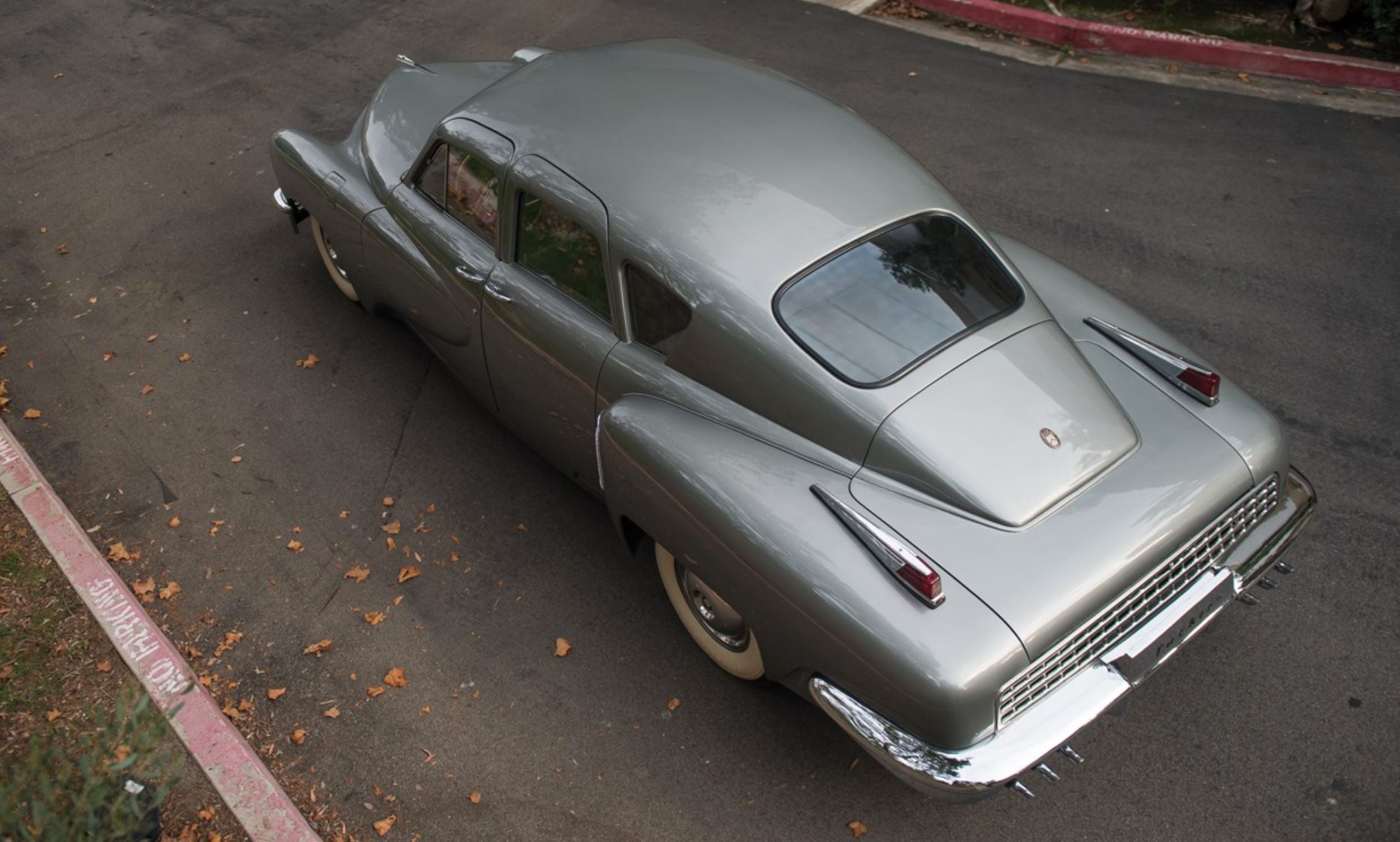The fabled Tucker 48 was a revolutionary sedan that was eons ahead of its competition, and frankly, might not have had any legitimate competition... had it ultimately reached mass production. Its creator, Preston Tucker, was a revolutionary demi-god of the automotive atmosphere.
Tucker had dared to tread high above the murky, stagnant waters of 1940s’ automotive technology and the standards back then. It was in those very waters in which he’d stood, reeling in the seemingly forbidden concept of innovation, like some elusive marlin who’d dared to shoot out of those same dark waters.
Unfortunately, that dream had slipped right off Tucker’s hook, just at the very dawn of a company which could've become one of the Big Three’s most threatening competitors. While Detroit was busy building pre-war technology for a post-war world, Tucker sought to bring new ideas for performance, safety, and style to the masses... and then, it was shot down.
The Tucker 48 Has Its Roots In Racing And War
Preston Tucker, the man behind the Tucker 48, was also a man of racing in the years prior to his company's inception. Throughout the 1930s, Preston Tucker had been working closely with Harry Miller, one of the era's most established car-builders for the storied Indianapolis Motor Speedway. In fact, Miller's engine designs were so advanced that even the legendary Ettore Bugatti was accused of copying him for his Type 50 and Type 51 engines.
Preston Tucker worked alongside Miller for several years, learning true innovation on the racetrack. It was there that he'd understood the capabilities of what a car could actually be, in terms of performance, versus what the Big Three and other automakers had been delivering to the public.
Preston Tucker had a dream to create his own brand of car, one that wasn't afraid to try new ideas at the cost of development. Unfortunately, the advent of WWII had put these plans on hiatus. During the war, virtually all automotive production within the United States had ceased in order for manufacturers to better concentrate their resources and materials onto the war effort. Despite this, Tucker still had intentions of creating a car, although not one for the civilian usage.
The result was the Tucker Tiger; an armored, all-terrain vehicle that was powered by a Packard V12. The engine had been tuned with help from Harry Miller, and the car reportedly was capable of speeds far in excess of 100mph. Unfortunately for Tucker, the United States Military had deemed that no combat vehicle should be driven above speeds of 35mph. As a result, this project never went beyond the prototype stage.
Preston Tucker Launches His Company, But Disaster Unfolds
By 1947, Tucker had established his company and unveiled its first prototype. Initially dubbed the "Torpedo," the name was later changed to the Tucker 48 to avoid association with war in the minds of prospective buyers. This initial prototype, which had been nicknamed the Tin Goose, featured one of the largest engines ever constructed for a passenger car. Tucker's prototype had touted a 589ci flat-six power plant. Like most larger engines of this nature, Tucker's 589 had been built to such large specifications in order to reduce overall stress on its components by keeping the tachs down. Still, this engine was deemed a failure, and consequently never reached any of the production models.
By the time that the production Tucker 48's came to fruition, however, they were packed with a variety of revolutionary features, with several of which considered to be virtually unheard of for a family sedan. Some of these innovations included a focus on safety, as Preston Tucker had been highly adamant that then-modern cars offered very little in terms of protection for both drivers and passengers. To help combat this, the Tucker 48 featured an unusual "pop-out" windshield, which had been designed specifically to dismount from its frame upon impact and avoid cutting the car's occupants with shattering glass.
Other details included a padded dashboard and door panels, in an effort to help cushion impact during a collision. For performance, the Tucker 48 eventually ended up receiving an H-6 engine built by Franklin, which had originally been intended for stationary and aircraft applications. With 164hp and 372 lb-ft of torque on tap, this engine allowed the Tucker 48 to achieve a top speed of 120mph. This figure had placed the Tucker in the same range as the Jaguar XK120, one of the fastest production cars of 1948.
While Detroit's major automakers had been busy reselling the same models that they'd been building in the years preceding WWII, Preston Tucker had seized this opportunity to make a name for himself, his company, and the innovations brought forth from which. However, the way in which Tucker had created his company eventually drew legal attention.
Prior to production, Tucker had sold off licenses for dealerships, which were planned to be constructed upon completion of the finished product. Furthermore, he'd also experimented with the idea of selling accessories for cars that weren't even built yet, such as radios, in order to garnish the funds necessary to complete production. Combined with sales of company stock, Preston Tucker had raised approximately $25 million in capital for his company by using these methods.
Unfortunately, these unorthodox tactics had captured the eye of the Securities and Exchange Comission (SEC), which had been established by the US government to monitor unregulated stock trading. Just as production Tucker 48's were finally rolling off the assembly line, an investigation was launched, and Preston Tucker was forced to leave his assembly line at idle to conserve funds. A trial then ensued, where Tucker had been accused of Fraud. Although Preston Tucker would later be acquitted, the value of his stock had plummeted and the Tucker Corporation eventually dissolved, leaving only 51 examples produced
What Really Took Down The Tucker Corporation?
Ever since the investigation, it's been long-rumored that major Detroit automakers had some form of influence in the SEC's investigation of Tucker. Preston Tucker himself had even suspected this, although no concrete evidence of this has ever emerged. Philip S. Egan, one of the people who'd worked on the Tucker design team, had written in his book that he'd never witnessed any sign of maliciousness on behalf of the Big Three. In fact, Egan had also claimed that the Tucker Corporation had been gifted 50 steering wheels by Lincoln during production, after a redesign issue threatened to hinder progress on the assembly line.
Had the Tucker Automobile Company survived, it would've likely changed the way that cars were perceived throughout the following decades. Preston Tucker's innovations in safety and performance had only been in their infancy at the time the company folded. In fact, prior to the SEC investigation, Tucker had even partnered with Italian engineer Secundo Campini to research and develop a turbine-powered model, long before Chrysler began dabbling with this same technology. Another model, the Talisman, was also being designed as a sports car before things finally shut down. Sadly, all of this eventually disappeared into obscurity, never to see the light of day.

